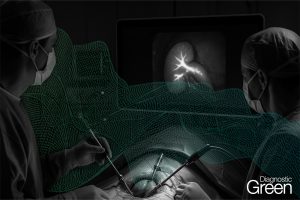Indocyanine green fluorescence angiography (ICG-FA) allows for real-time intraoperative assessment of the perfusion of the gastric conduit during esophagectomy. The aim of this study was to investigate the effect of the implementation of ICG-FA during robot-assisted minimally invasive esophagectomy (RAMIE) with an intrathoracic anastomosis. In this prospective cohort study, a standardized protocol for ICG-FA was implemented in a high-volume center in December 2018. All consecutive patients who underwent RAMIE with an intrathoracic anastomosis were included.
The primary outcome was whether the initial chosen site for the anastomosis on the gastric conduit was changed based on ICG-FA findings. In addition, ICG-FA was quantified based on the procedural videos. Out of the 63 included patients, the planned location of the anastomosis was changed in 9 (14%) patients, based on ICG-FA. The median time to maximum intensity at the base of the gastric conduit was shorter (25 s; range 13–49) compared to tip (34 s; range 12–83). In patients with anastomotic leakage, the median time to reach the FImax at the tip was 56 s (range 30–83) compared to 34 s (range 12–66) in patients without anastomotic leakage ( p = 0.320).
The use of ICG-FA resulted in an adaptation of the anastomotic site in nine (14%) patients during RAMIE with intrathoracic anastomosis. The quantification of ICG-FA showed that the gastric conduit reaches it maximum intensity in a base-to-tip direction. Perfusion of the entire gastric conduit was worse for patients with anastomotic leakage, although not statistically different.




